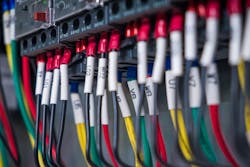I know, RS-232 is not gone completely but in most things it has disappeared. Recently I bought a new laptop to use in my ham shack. I have several older accessories that use RS-232 and I had hoped to use them. But guess I won’t until I find a solution. I specifically wanted a laptop because it saves space but I could not find one that still offered RS-232. What a raw deal. I cannot think of many PC desktops that also offer RS-232 either. How much could it cost to include this ancient interface these days? Pennies I would guess, but there goes the gross margin on a now commodity product for something most buyers will never use.
Is RS-232 really dead? Yes and no. For PC peripherals it is no longer an option. USB has replaced almost everything else and granted it is much better. But for pure reliability and ruggedness you can’t beat a basic serial COM port for just connecting one thing to another. It is very slow but many applications do not require speed. Data rates to 19.2 kb/s or even higher are possible depending upon cable length. That is more than sufficient for thousands of serial data applications. The real big benefit of RS-232 is its reliability. The large bipolar voltage swings are really immune to all but the fieriest of impulse noise. And the start/stop bit plus parity really ensures that the data gets there correctly.
But the serial port is not dead. While RS-232 is mainly gone from the computer scene, it is still alive and well in industry. In fact, according to some, the RS-232 product business is still growing. When you need a good low cost reliable serial interface to connect things, RS-232 is hard to beat despite competition from other serial interfaces like CAN, or LIN or even I2C. If you need faster speeds, go to RS-422/485. It can do megabit rates over short distances without all the cost and fuss of USB.
Incidentally, if you really do need to connect your laptop or PC to an RS-232 device, you can get accessory converters. Companies like B&B Electronics (www.bb-elec.com ) have a variety of converters and cable assemblies that translate one serial standard to another. That is what I am going to get for the ham shack.
In any case, don’t write off RS-232 when you are designing products that need serial data links. It is definitely not dead and still a great option for many projects. And it is a worldwide standard. For many it is comforting to see that DB9 connector on the back panel.
Please note that I am not also asking for the return of the parallel port.
About the Author

Lou Frenzel
Technical Contributing Editor
Lou Frenzel is a Contributing Technology Editor for Electronic Design Magazine where he writes articles and the blog Communique and other online material on the wireless, networking, and communications sectors. Lou interviews executives and engineers, attends conferences, and researches multiple areas. Lou has been writing in some capacity for ED since 2000.
Lou has 25+ years experience in the electronics industry as an engineer and manager. He has held VP level positions with Heathkit, McGraw Hill, and has 9 years of college teaching experience. Lou holds a bachelor’s degree from the University of Houston and a master’s degree from the University of Maryland. He is author of 28 books on computer and electronic subjects and lives in Bulverde, TX with his wife Joan. His website is www.loufrenzel.com.
